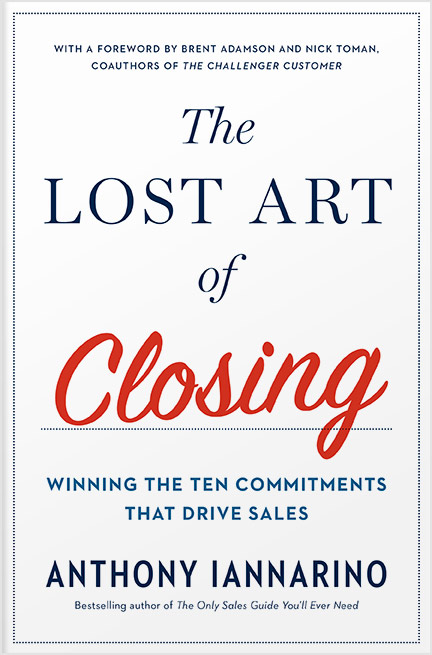In August of 2017, I wrote about the fact that the linear sales process is broken. Because the sales conversation is nonlinear, it isn’t easy to follow a linear path from target to close. How could it be otherwise in something as dynamic and complex as human beings working towards change and better future results? My response was to develop a nonlinear approach to controlling the process and recognizing the commitments clients need to make and the different conversations that enable them to move forward.
All of this is true, and none of it means you no longer need a sales process. You still need a way to mark out where you are in the sales conversation, and the general lines still provide good guidance, guidance that improves your chances of creating and winning big deals.
Here is how to talk to your sales force about the sales process and why they should use it, even if it is difficult to follow it in the linear way we usually illustrate it.
What Is the Sales Process?
The sales process is our best guess at what we need to do throughout the sales conversations we have with our clients and our prospective clients. It breaks these conversations into some general categories, like Target (which tells you what companies you are supposed to pursue), Qualification (which ensure that the prospect will benefit from what we do, even though I am not big on qualifying), Discovery (the conversation about why the prospect should change and exploring ways we improve their results), Solution Design (the collaborative conversation about how we work together with the prospect to develop a solution they can execute), Presentation (which is where we present our solution and a proposal), and something we call Acquisition (which includes negotiation and all the things we need to do to start providing the solution).
Under each of the categories we use to outline the sales process, there are certain outcomes that we, and our prospective clients, need. It would be easier for both us and our prospects if they followed this path as we have designed it based on our experience, but that is now a rare occurrence. Even though it’s not easy, we still need to accomplish all the outcomes of every stage to the best of our ability, even when it feels like more work. By achieving the outcomes, we ensure we do our best work and improve our win rate.
A Few Words About Nonlinearity
We acknowledge the fact that things don’t progress neatly from Target to Close. Recognizing that this is true, we use the sales process to remind us where we are—and what we have skipped over. This is easier to explain with the examples, all of which will be too familiar.
Imagine you call on a target account, and you schedule a meeting with a person who appears to be a decision-maker. Because the company is a target, they are already qualified. You have two excellent discovery meetings with your contact and two of the people who will be instrumental in the change you are exploring. Your contact invites you to explore what might be a solution. You put together some ideas to review, only to show up to a room with three new stakeholders. None of them have had the opportunity to have a discovery conversation, all with needs that were not considered as you, and your primary contact worked to figure out what might work.
Did your contact lie to you about the people who were going to be involved? No, they did not. As they talked about the initiative, other people who were left out of the conversation raised their hands—and their concerns—and now they’re part of the process. What do you do when half of the people in the room haven’t had a chance to engage in a discovery conversation? Our answer is that you reset, and do the work of understanding their needs and ensuring that the solution is one that can agree to and execute effectively.
You may have to retrace your steps as things change or accelerate a conversation that normally comes later in the sales conversation, but that doesn’t mean that we don’t still need to ensure we are achieving the outcomes that are part of our approach to winning deals.
Our Consultative Approach
You will hear a lot of people talk about being a consultative salesperson, meaning that they are not high pressure, ask good questions, and help solve their client’s problems. That is not what the word consultative means. Consultative means you advise your clients on decisions around their business, which I know you will agree with.
What we rarely talk about when it comes to offering our clients advice is the need to advise them on the process that will best help them to produce better results, working to control the process to ensure that they have all the conversations they need to have with us—and the people on their teams. That advice is rarely given to contacts, especially when salespeople aren’t aware that they should be providing that advice. Because they have never been trained or taught to have these conversations, they don’t have the strategy or language to have the conversations effectively.
One of our strategic advantages is our modern sales approach. This approach includes processes and methodologies that allow us to create greater value for our clients and position ourselves as consultative salespeople who can help them achieve better results. These approaches and our execution enable us to create and win big deals, doing such good work, and with such great insights, we earn the right to the next deal without having to compete for the business.
This is why you must learn the process and the methodologies that will allow you to succeed when things go nonlinear.

Essential Reading!
Get my 2nd book: The Lost Art of Closing
"In The Lost Art of Closing, Anthony proves that the final commitment can actually be one of the easiest parts of the sales process—if you’ve set it up properly with other commitments that have to happen long before the close. The key is to lead customers through a series of necessary steps designed to prevent a purchase stall."
Buy Now
Get the Free eBook!
How to Lead: The Leadership eBook
As leaders, we're faced with decisions everyday—not all of which are easy to make. Learn how to make those tough decisions, hold yourself and your team accountable, and build a legacy with this free eBook.
Download Now







.jpg?width=768&height=994&name=how-to-lead-ebook-v3-1-cover%20(3).jpg)


